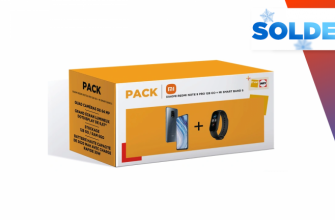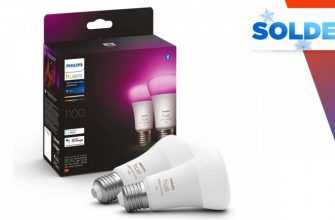The next round of processors at AMD is therefore reserved for laptops. The Ryzen 6000 under Zen3 + architecture will indeed not arrive on stationary PCs. The latter will be directly entitled to Ryzen 7000 with Zen 4 architecture, during the second half of 2024.
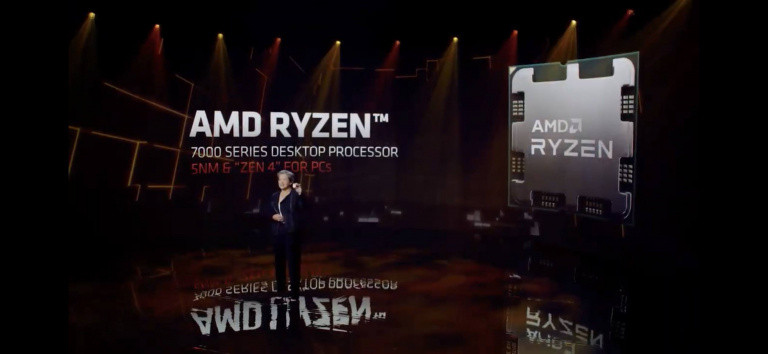
For now, Lisa Su and her team have been keen to drive home the point with the Ryzen 6000 for laptops. Engraved in 6 nm and capable of going up to 5 GHz in “boost” frequency, they are the first to offer an iGPU (graphics chip integrated into the processor) based on RDNA2 architecture, the same as on the Radeon RX 6000 and on the PlayStation 5 and Xbox Series consoles. We will therefore be entitled to ultraportable PCs without a dedicated graphics card, capable of handling AAA games at 1080p and even activating ray-tracing as well as AMD’s intelligent upscaling technology, FidelityFX Super Resolution (FSR). . The manufacturer’s promises are tempting: + 300% performance compared to an Intel Core i7 1165G7 on Doom Eternal and 61% more on Watch Dogs Legion.
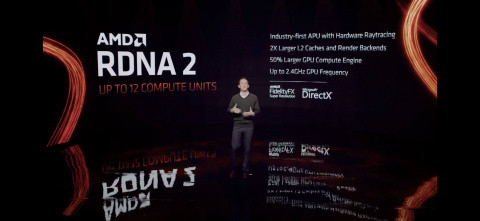
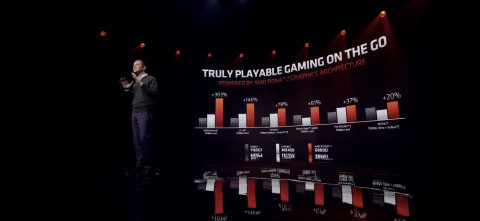
The company does not reveal precise figures for these titles, but relies heavily on the power of FSR to drastically increase performance. This will allow you to play Far Cry 6 at 59 FPS at 1080p, with FSR enabled. It remains to be seen if the quality of the rendering will not be too degraded, as is unfortunately regularly the case in this definition with FSR. Still with FSR, the company puts forward figures like 114 FPS on Call of Duty Vanguard or 73 FPS on Deathloop. Remember that we are talking here about ultraportable PCs running with a low consumption processor (the Ryzen 7 6800U in this case). The performance is therefore rather impressive.
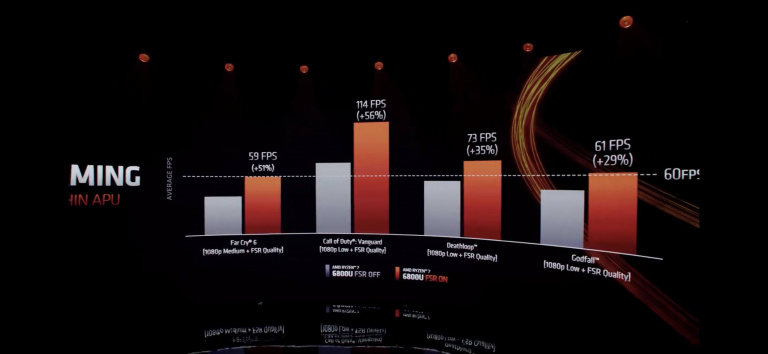
The Ryzen 6000 will also be available in “H” version and therefore dedicated to more classic and bulky gaming laptops. Models will be marketed from most laptop PC manufacturers.
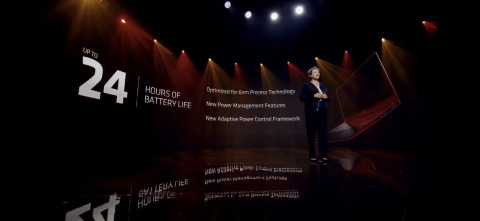
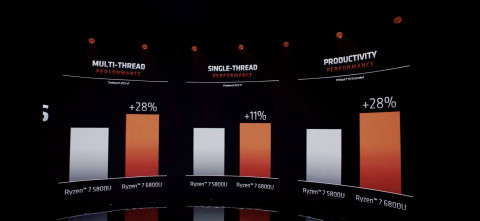
Apart from video games, the Ryzen 6000 also promise to perform very well, with a 28% boost compared to the previous generation Ryzen 7 5000. In addition to this, the “low power” versions of processors (those with a “U” suffix) would allow some ultraportables reach a battery life of 24 hours.
In addition to these new Ryzen 6000 processors, AMD presented a new range of graphics cards for laptops, based on the Radeon RX 6000 range. We already knew the RX 6000M, here are the RX 6000S. GPUs optimized to work in very thin and light “gaming” laptops, but which should still offer a good level of performance. AMD aims for more than 100 FPS at the maximum level of detail (we imagine in 1080p) and evokes a new laptop PC Asus ROG G14.
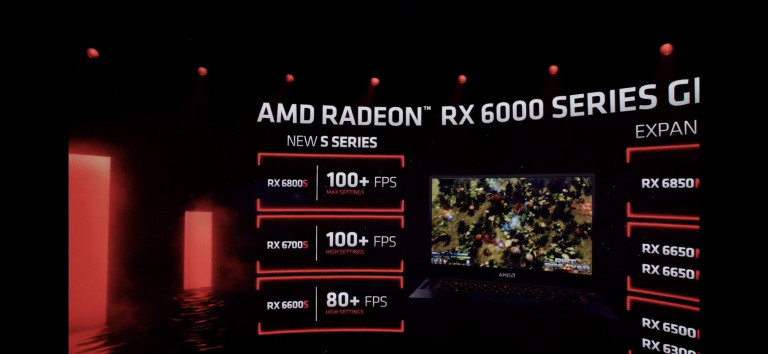
Finally, on the GPU side, we were treated to a presentation of the Radeon RX 6500XT for desktop, which completes the RX 6000 range by positioning itself at the entry level. It will indeed be offered “from” 199 dollars and promises performance up to 59% better than a GeForce GTX 1650, in addition to supporting ray-tracing.
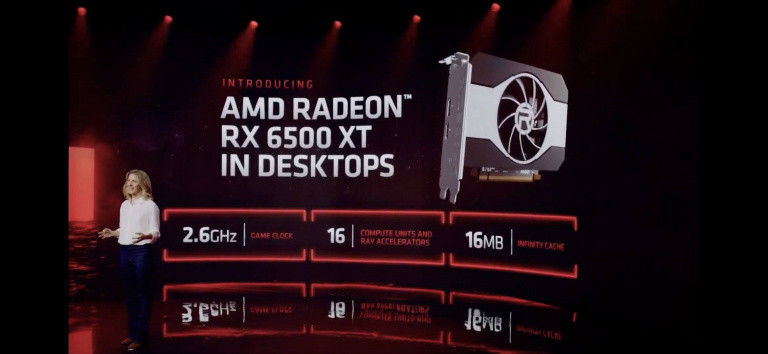
In short, expected announcements, but a line-up of solid novelties and essentially dedicated to laptops. AMD intends to continue to grab market share from Intel in this very competitive market, but also very promising.


